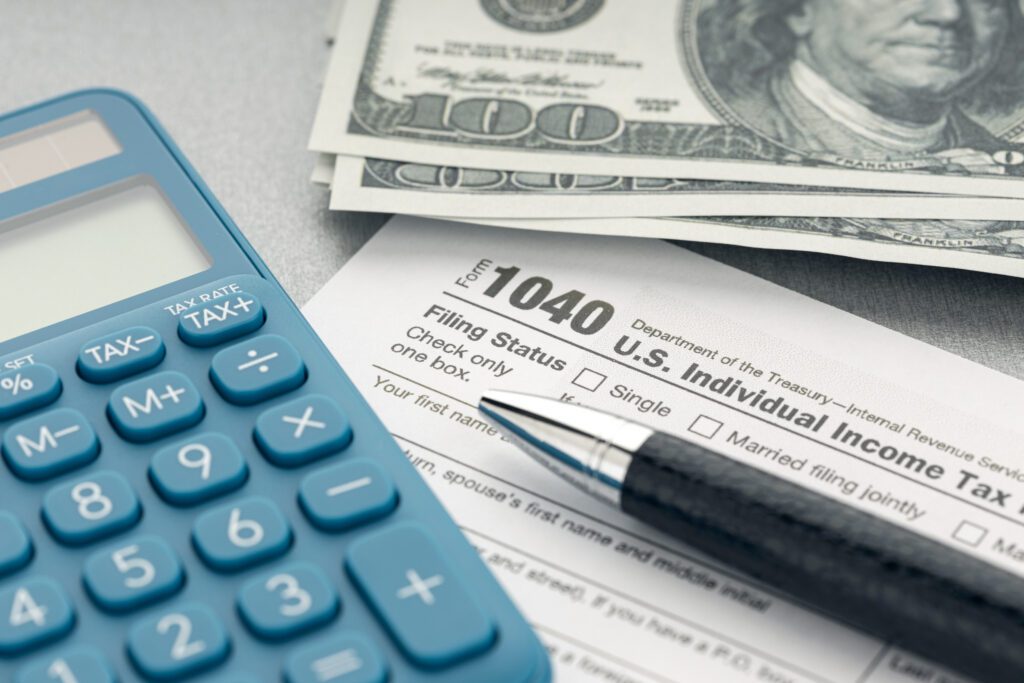Disclosure: Some of the links on this site are affiliate links. This means that if you click on the link and purchase an item, I may receive a small commission at no extra cost to you. I only recommend products and services that I personally use, trust, or believe will provide value.

Keep More of Your Nursing Paycheck From Going to Taxes
Visualize this: the last 2 weeks you worked your ass off as an RN (for me, as a PACU RN. It was not a chill couple of weeks. You were short-staffed, got asked to stay overtime, and of course you said yes because of course, extra money.
Then payday comes, you’ve been looking forward to see your paycheck, excited to finally enjoy your hard-earned money… then you actually check your paystub, stare at it in disbelief, and wonder where the heck did my money go? Yep, a big chunk of it got eaten up by taxes.
I get it. We all have a civic duty to pay our fair share. But let’s be real—our government has also given us legal ways to lighten the tax burden. And if they green-lighted it, why not take advantage?
These are not secrets. Every nurse—RNs, LVNs, LPNs (and honestly, everyone)—should know about these ways to lower taxes:
1. Contribute to Retirement Accounts
(401k + Roth IRA — my 2025 contributions: $23k to 401k, $7k to Roth)
It’s really a no-brainer not to contribute to your 401k (unless you’re drowning in high-interest debt, in which case, fix that first). Especially if your employer is offering a match—aka free money.
Aside from that, the main reason is the tax advantage. Your 401k contributions come out before income taxes are calculated, which lowers your adjusted gross income and reduces the taxes you owe. For 2025, if you max it out, you’re not just saving for retirement—you’re also saving on taxes now.
Now, let’s talk Roth IRA. This one won’t lower your taxes today, but the payoff is huge: all your contributions grow tax-free, and your withdrawals in retirement are also tax-free.
The catch: Roth IRA contributions have an income limit of $150k. If you earn more, you’ll need to look up the Backdoor Roth. It’s a fully legal way to work around the income cap. Just make sure to check in with your accountant before doing it.
2. HSA (Health Savings Account)
(My contribution: $3000/year)
This is one of the best tax-advantaged investment accounts you can get if you qualify. It’s perfect for me because I pay about $800 a month for health insurance for myself and my child. To qualify, you need a high-deductible health plan (HDHP)—usually with lower monthly premiums but higher out-of-pocket costs. What is HDHP per Healthcare.gov.
Why is it the best? Because of the triple tax advantage:
- Lowers your taxable income (like a 401k)
- Grows tax-free
- Withdrawals are tax-free for medical expenses
Im only able to contribute $3000/year because thats the max I can afford at this time, hoping and praying that I can increase this when my childcare costs is lower. For 2025, the max you can contribute for individuals is $4300 and $8550 for families.
Pro tip: If you have an HSA, try paying medical expenses out of pocket and let your HSA funds grow untouched. That way, you get more years of compounding growth.
3. FSA (Flexible Spending Account)
(My contribution: $1,000/year)
An FSA lets you set aside pre-tax money for qualified healthcare expenses. It lowers your taxable income, which means more tax savings.
But remember the use-it-or-lose-it rule: you have to spend it before the plan year ends. So make a plan ahead of time for how much you think you’ll actually use on FSA-eligible expenses. Personally, I set aside $1,000/year (about $41 per paycheck).
Some surprising items you probably didn’t know are FSA-eligible.
I use it for co-pays, medications not covered by my insurance, and even items from the FSA Store—like pull-up diapers for my toddler, sunscreen, skincare, and other things I didn’t realize were eligible.
4. Dependent Care FSA (DCFSA)
(My contribution: $5,000/year)
This one helped me a lot to lower my taxes this year because I contributed the max amount of $5,000/year. That’s $5,000 less from my taxable income.
This account is for people like me who have to pay for childcare and for some, eldercare. I mean, since Im already paying so much for childcare, it’s nice to at least get a little bit of a tax break from it.
The way it works is you decide during the enrollment period how much you want to contribute for the year, and that amount is deducted from each paycheck. At the end of the year, you submit receipts from your childcare provider or caregiver to be reimbursed with the money you contributed.
The Bottom Line
By contributing to these accounts, I effectively lowered my taxable income for 2025 and dropped my tax bracket from 24% to 22%. It doesn’t seem like much, but trust me, I’d rather keep a portion of my $$$ from my paycheck every 2 weeks for my future self.
So yes, it always hurts to look at your paycheck and see how much gets taken out for taxes. But remember—you have options (all legal) to soften the blow, keep more of your hard-earned RN money, and even put it to work to make money for you.


